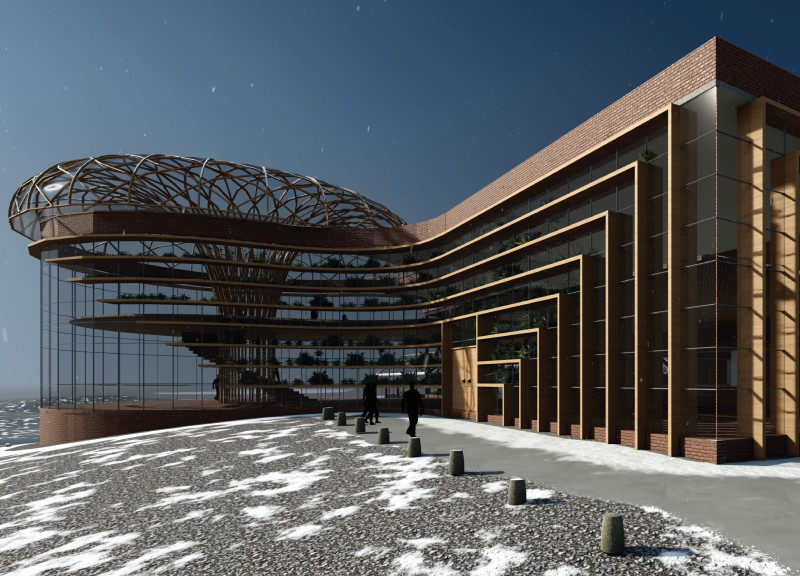5 key facts about this project
The Green House Restaurant stands out in the dramatic landscapes of Iceland, where volcanic terrain meets calm lakes. It serves a dual purpose: providing fresh food and a unique dining experience. The design emphasizes a close relationship with nature, highlighting sustainability and connection. Guests can feel engaged with their surroundings, enhancing their overall experience.
Design Concept and Space Organization
The layout consists of three main areas. The Green House focuses on food production and dining. The Kitchen and Service Areas are dedicated to operational tasks. Finally, the Multipurpose Space on the upper floor provides additional flexibility. This organization not only improves the flow of activities but also invites guests to explore and interact with the culinary aspects of their visit.
Materiality and Aesthetic Choices
Large glass facades wrap around the building, offering uninterrupted views of the beautiful scenery. These facades add to the overall look of the restaurant. They also allow parts of the building to open during different seasons, letting in fresh air and light. This feature strengthens the connection between the indoor dining space and the outdoor environment, regardless of the weather.
Functionality and Flexibility
The ground floor has a mix of spaces. Areas for the greenhouse, guest reception, bar, and dining are all thoughtfully organized for ease of use. The upper floor contains a multipurpose space connected by a striking staircase and a panoramic elevator. This area can be divided with sliding panels, allowing the space to be adapted for various activities. It can serve as a yoga studio or a place for film screenings, enhancing the restaurant's usability.
Sustainable Integration
Materials such as wood are used for flooring and panels, adding warmth to the interior. Cross-Laminated Timber (CLT) is important for the structure of the second floor and supports sustainability goals. The green roof collects rainwater and promotes local plant life. Attention to these details showcases a commitment to sustainability, creating a connection between the restaurant and its natural setting.






















































